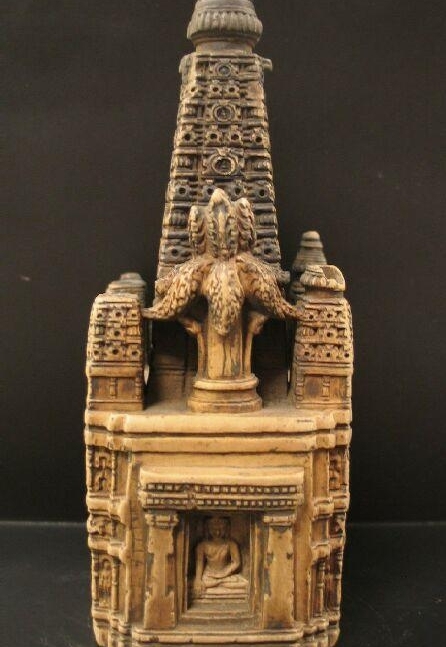
According to Buddhist tradition, Bodhgaya was the place where the Buddha meditated under the bodhi tree and attained enlightenment. It was believed to be the adamantine seat, (vajrasana) where all buddhas—past, present, and future—attain enlightenment. Mahabodhi Temple, located in front of this seat, was built during the reign of Ashoka and attained its present form in the 5th–6th century. A pilgrimage site revered across the Buddhist world, it was often depicted in small models created as pilgrimage souvenirs and used to enshrine symbolic representations of the site (such as Bodhi leaves), which were considered relics.
After the Islamic conquests and decline of Buddhism in India after the 13th century, the site fell into ruins. Without a local Buddhist community to welcome and support pilgrims, it became difficult for Buddhists elsewhere in the world to visit the site. But viewing replicas of the temple could serve as substitutes for visiting the site in person, and small models like this one have been found in places like Burma and Tibet, as well as full-scale temple replicas constructed in places such as Nepal. This model, likely created in Bodhgaya itself, represents what the temple may have looked like in the 11th century, shortly before it fell into ruin. On the basis of models like this one, the Mahabodhi temple was rebuilt by British archaeologists and early Buddhist scholars in the 19th century and now receives more visitors than ever.
Come view our Art of the Week in the exhibition Charged With Buddha’s Blessings.
C2019.2.2, HAR 68417
- https://dev.rubinmuseum.org/images/content/7282/l2005991-3__zoom.jpg
- https://dev.rubinmuseum.org/images/content/7282/l2005991-3__zoom.jpg

